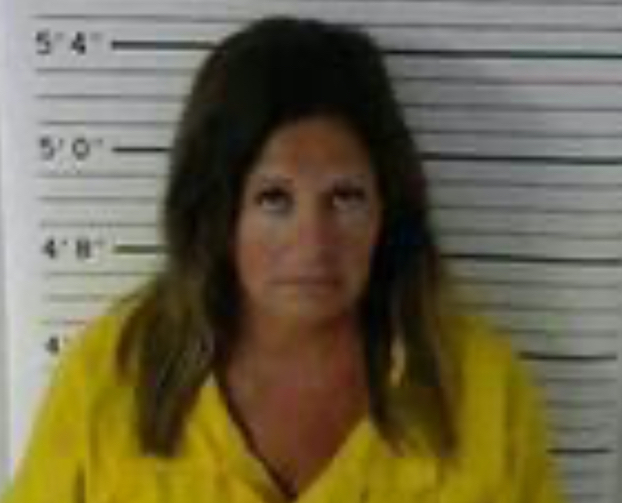The Lake Area amusement park that never came to be
Published 5:11 pm Sunday, October 29, 2017
Copies of pamphlet were handed out to potential investors
Trending
In the early 1960s, one Lake Charles businessman had a big dream. Albert J. Kurtz wanted to build a giant amusement park here that would rival Six Flags Over Texas in Arlington, Texas.
The park was to be called Jean LaFitte Pirateland, and it was to be built just east of Lake Charles on 162 acres of land at the intersection of Goodman Road and I-10, at a cost of $10 million.
Kurtz formed the Pirateland Development Co. Inc.to make his dream a reality. There were detailed plans. A board of directors was organized. A prospectus was printed to lure potential investors. There were artists’ renderings of what the park would look like. Stock was sold. Excitement for the park grew.
Trending
Pirateland was to employ a year-round staff of 600. During tourist season, 200 more people would be employed. According to the prospectus, Pirateland was to include a Storybook Land, Comic Strip Land, Jim Bowie Land, Ranch Land, midway rides, sidewalk cafes and a French Quarter section.
An exact replica of Jean LaFitte’s Blacksmith Shop in New Orleans was to be built and used as a gift shop.
There was to be a pirate’s island and a pirate ship, a miniature golf course, and archery and shooting ranges. Visitors would ride on a steamboat, on speedboats, a train or a futuristic-looking monorail.
An artist’s rendering of, from left, the proposed Pirateland Convention City, Motor Hotel and Supper Club drawn up by Industrial Design in the early 1960s.
There would be an airstrip and a heliport. Visitors could park their cars in a 40-acre parking lot and attend functions in a convention hall that would seat 5,000. Then, if they wished, they would book a room in a Pirateland hotel/ motel. (The corporation was going to build the hotel/motel and then lease it to a major chain.)
The park was to be built in three phases. A zoo would be added in phase two, and a marine land in phase three. Pirateland was going to be huge.
A paragraph in the Pirateland prospectus reads: “In formulating our ideas for this type of venture, the name of Jean LaFitte as our basic theme seemed to be a natural conclusion. This is due to his colorful history, the location of the project, the ability to be able to costume and to set a decorative theme for buildings and landscaping, but most of all to the popular appeal of the man himself.”
Nearly every detail was outlined for the park, even down to the admission prices. With rides included, adults would pay $3 to enter; children under 12 would pay $2.50.
Kurtz was a relentless cheerleader and promoter.
Archived news stories from the American Press show that:
Where it would have been
● On Sept. 24, 1963, Kurtz appealed to the Calcasieu Parish Police Jury to endorse Pirateland because he and his colleagues were trying to obtain a $5 million “area rehabilitation loan” to build the park. The Police Jury’s endorsement would add impetus to the claim that the area needed the additional employment the park would provide. The Police Jury did endorse Pirateland at that time.
● On Feb. 26, 1964, Kurtz showed sketches of amusement rides, the convention hall and other park features to guests at a Push Jean LaFitte Pirateland meeting.
● On March 25, 1964, Kurtz, the guest speaker at the Greater Lake Charles Civitan Club luncheon, said he hoped groundbreaking would take place around the first of June that year.
And then, not quite two months after that luncheon, Al Kurtz was dead. He died May 21, 1964 of a sudden heart attack. He was 42.
After Kurtz’s death, the board of directors chose to move forward with Pirateland.
Three days after Kurtz’s death, Stanley S. Levy, a local dentist,was elected president of the Jean Lafitte Pirateland Development Corp. during an emergency meeting of the board of directors.
On that day Levy said, “We definitely intend to carry out this great and worthwhile project and build this facility in Lake Charles as Kurtz had intended. All the present plans and projects will continue as scheduled.”
Joe Bergeron, manager of Pirateland stock promotion sales, continued to raise money through stock sales.
The monorail was to be a futuristic ride that would race across Pirateland.
A $7 million backer would invest in Pirateland when $3 million in common stock had been sold, Bergeron told potential investors.
But things began to go downhill. Stock sales slowed. There was a push by the board to make Pirateland part of Sam Houston Jones State Park instead of having it built at the originally proposed location.
State Parks and Recreation Commission Director Lamar Gibson was opposed to that idea. In July 1965, Gibson said, “We are not opposed to Pirateland, but we are opposed to Pirateland as a part of one of our state parks, since we feel such a commercial establishment is against the purpose and policy of the parks.”
In March 1967, the Pirateland board voted to liquidate the corporation.
Phillip J. Shaheen Jr., attorney and vice president of the corporation, said the board of directors would “return 90 percent of the investment of the stockholders at the outset of the sale of stock as guaranteed by Al Kurtz.”
Asked about the cause of the liquidation, Shaheen said at the time, “There’s no need for me to cry on anyone’s shoulder, but things didn’t work out after Kurtz’ death.”
Kurtz, a native of Philadelphia, had been living in Lake Charles for 10 years at the time of his death.
He was the owner and operator of Lake Charles Finance Service Inc. before selling the business to devote all of his time to making his dream of Pirateland a reality. Kurtz was a retired U.S. Army major with 22 years of active and reserve service.
In June 1, 1964, 11 days after Kurtz died, Lake Charles resident Earl W. Parmiter wrote this of Kurtz in a letter to the editor in the American Press:
Jean LaFitte Pirateland was to be built on 162 acres of land in the early 1960s, at a cost of $10 million.
“Al’s 10-year dream of building ‘Pirateland’ for Lake Charles was taking shape. He sold a profitable business to devote himself full-time to this tremendous task.
“He wanted to give Lake Charles its civic auditorium, marineland, museum, zoo, and recreational playground. Who else in Lake Charles has ever offered to do this? Al dedicated his life to this dream. I wonder if the people here know what they have lost?”




